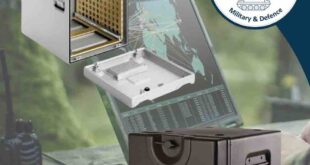Motor racing has always been at the forefront of research and development, as every team looks to shed away those precious seconds per lap.
To encourage automotive engineers of the future, the Formula Society of Automotive Engineers (Formula SAE) is a global student competition that pits a variety of university teams against each other to develop small, Formula-style race cars.
When the racing department at Italian university Politecnico di Milano, Dynamis PRC, was looking to improve the performance of its car’s steering column and suspensions, it partnered with Exel Composites.
While Dynamis PRC is a student-led organization, its practices are anything but amateur. Based at one of Italy’s premier engineering universities, Dynamis designs and builds formula-style vehicles to compete in the Formula SAE. After a reasonably successful year in 2018, when the team secured top ten finishes in all its competitions, Dynamis needed to push the following year’s car even further.
Shedding weight
“We had just finished a successful year, but knew that our vehicle could perform better,” explains Andrea Vezzoli, technical director at Dynamis. “We had two main objectives. The first was reduce the car’s weight and the second was to improve the suspension.”
Singling out the steering column as the main area for weight reduction, Dynamis began searching for new materials. Making weight improvements was critical because every other team would also be finessing their cars, many of which had received support from major car manufacturers.
When researching new materials, Dynamis encountered Politecnico di Milano alumni Francesco Ierullo, who is currently Head of Sales for South and West Europe and IMEA at Exel Composites. “When they reached out, I had a flashback to my own experiences studying engineering at the Politecnico,” explained Ierullo. “I had been aware of the Formula SAE during my studies and was pleasantly surprised by its growth and the students’ calibre of design skills.
“We’re always looking for ways to get composites into the hands of students, because the more experience they have now, the better equipped they will be when they work in the field,” continued Ierullo. “More and more fields of industry are using composites, but direct student exposure to the material remains low. Whatever we can do to help is always important to us.”
Minimising time and weight
After reviewing the focus areas with the racing team, Exel Composites suggested a variety of carbon fibre tubes. “Using carbon fibre was a real breakthrough for reducing the weight of the driving column,” said Vezzoli. “We were able to shed 15 kilogrammes of weight, which helped shave two seconds off our lap time.
“Another bonus of carbon fibre is its strength. The car’s driving column must be able to resist three times the peak load, which for our design was 100 newton metres (Nm). Using Exel’s carbon fibre, we were able to push it to 140Nm and the material was still functional, unlike with many metals that would snap.”
“We built a database of materials and used an algorithm to indicate which material was best for certain components,” explained Ernesto Riccardo head of suspension and drivetrain department at Dynamis. “Once we input the properties of Exel’s products into the database, the algorithm told us to use it every time without fail.”
Exel’s tubes were also used to increase the rigidity of the vehicle’s suspension, without increasing its weight. With many other materials, the forces would deform the car’s parts and reduce their effectiveness, but using carbon fibre completely avoids this issue.
Forward drive
With the carbon fibre pieces installed, Dynamis took the car to four Formula SAE races. The first race took place in Holland, where the team won overall. Returning to Italy for the third race, Dynamis saw another victory.
Held in Germany, the homeland of many of the world’s largest car manufacturers, the final race was the toughest. “Many of the German teams are directly linked with their local car manufacturers, so we knew the car would have to perform well to help us hit our targets,” explains Vezzoli.
Even against some of the most competitive teams in the world, Dynamis achieved a strong third-place position, making the season one of its most successful to date.
Despite a delayed 2020 season, the Dynamis team is looking forward to its next challenge, with long terms plans to compete in the electric car version of Formula SAE. “Using composites has been a breakthrough for our designs,” comments Riccardi. “In fact, for the next season, we are looking to incorporate some of Exel’s fibreglass elements in our aerodynamic wings for a new phase of lightweighting.”
Material choice is at the heart of many racing innovations, with composites demonstrating numerous benefits that can make vehicles lighter, stronger and more efficient.
Exposing engineers of the future to composites as early as possible is key to ensuring they’re ready for the material to pave their way to victory.
 Engineer News Network The ultimate online news and information resource for today’s engineer
Engineer News Network The ultimate online news and information resource for today’s engineer





